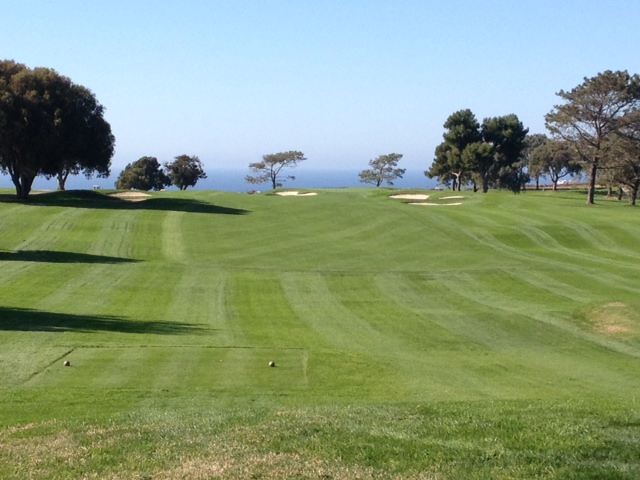The PGA Tour continues in California this week trading in the desert for the coast at Torrey Pines in La Jolla. Torrey Pines Golf Course sits on the coastal cliffs overlooking the Pacific Ocean and is recognized as the premier municipal golf course in the U.S. that’s fully owned and operated by a city. It’s fittingly named after the Torrey Pine, a rare tree that grows in the wild only along this local stretch of the coastline in San Diego County and on Santa Rosa Island.
Torrey Pines Golf Courses architecture and history
Torrey (golfer shorthand) built on the site of Camp Callan, a United States Army installation during World War II, opened in 1957 with two 18-hole layouts designed by Billy Bell, Sr. and Jr. While both North and South courses are played during the Farmers Insurance Open, it’s the South track that get’s the most love and attention. However, the North course has undergone a recent (2016) renovation by Tom Weiskopf and is ready to be shown off.
SIDE NOTE: The fact that Weiskopf was selected for the North redesign was a big, hairy deal at the time as Phil Mickelson - native San Diegan - was seen as the frontrunner and ended up not being chosen.
That being said, the North course will only be played once by all the players on Thursday or Friday, while the South course will be played by those making the cut three times (once pre-cut and twice on the weekend).
The defining characteristics of each course is pretty easy: North = short-ish and easy-ish (~7,000 yards / Rating: 74.5 / Slope: 133) and South = long and difficult (7,600+ yards / Rating: 78.2 / Slope: 144). In fact, the South course is the longest course played on the regular PGA Tour schedule.
So, what makes the South course so special? Well, since it was doctored by Rees Jones for the 2008 U.S. Open (which was memorably won by Tiger Woods on one leg vs. Rocco Mediate in a playoff) it’s come to be seen as a picturesque albeit stern test of golf. Mr. Jones’ redesign effectively stripped away the original essence of the Bell’s work by lengthening and straightening holes and elevating greens. In fact, strategy is largely out the window on the course as the sheer length requires the pros to absolutely pound the ball and then avoid greenside bunkers. Sorry, did someone just say ‘bomb and gouge’? See, 14 out of 18 are bracketed by bunkers left and right thus limiting some of their character or uniqueness.
For a course that is so close to the coast, many wish there were more dramatic ocean views than the current handful of holes. Not to mention all the interesting topography and ravines which only seldomly come into play.
There’s no doubt that Torrey is probably the best municipal golf facility in the country (with only the slightest edge over Bethpage) but with success comes exposure which begets money which turns into tourists which has made the courses feel less authentically San Diego. There are now luxury hotels near the first first tee/clubhouse anxious to cater more towards wealthy tourists than local, laid back San Diegans. Sure, they still get first dibs, but no question the character has changed and this feeling will only be amplified when Torrey hosts its second U.S. Open in 2021.
Holes To Watch
Hole 3 - Reminiscent of the seventh at Pebble Beach, golfers get the most dramatic view of the ocean before they’ve finished their first cup of coffee. As the PGA Tour describes: “Each day will present a different look, as two teeing grounds, with more than 50 yards difference in length, will be used. The two-level putting surface, falling dramatically from left to right, is deceptively difficult. The shorter days will get the tougher hole locations.”
Hole 13 - You know a par 5 is tough for the pros when the scoring average is over par. That is the case with the 13th. Playing at a whopping 614 yards, getting home in two is next to impossible without perfect wind conditions. With a new tee box added, back and to the left, requires a drive of at least 240 yards to carry the canyon. When the pros choose to go for the green in two, they will need to carry the second shot 250+ yards into a shallow green that’s elevated and protected by bunkers and rough in front.
Hole 14 - Steep cliffs all along the entire left side of this hole await errant tee shots or the dreaded duck hook. The approach into this tough hole requires carrying a deep bunker on the right while spinning the ball enough to keep it on the green. This shot will be most difficult with a back right pin location.

